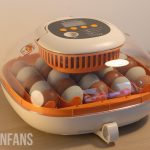What Is A Chick Brooder? (Set-Up And Must Haves)
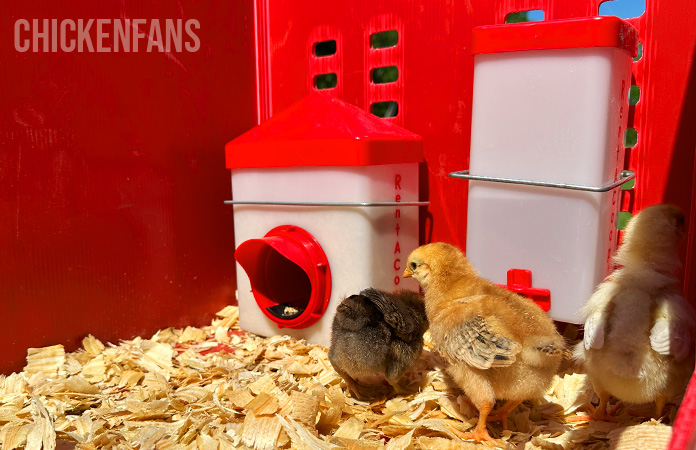
If you’re planning on hatching chicken eggs or caring for day-old chicks, it’s essential to set up your chick brooder once the chicks are about to arrive. This man-made nurturing hen keeps your chicks warm, protected, and cared for during these first weeks of their life.
But what is a chicken brooder? And which items are essential to have inside a brooder? Let’s determine what equipment you need to ensure your chicks grow into healthy birds.
Let’s address the million-dollar question first.
What Is a Chicken Brooder?
A chicken brooder is an enclosure for baby chicks designed to mimic the natural environment a mother hen would provide for her chicks. It’s a cozy nursery where chicks can safely grow until they are ready to go outside. A brooder should include warmth, light, protection, soft bedding, water, and food.
The brooding stage is essential in a chick’s life. In a natural setting, chicks would typically stay under the protective care of the mama hen. A brooder replicates these natural conditions, allowing you to raise chicks without a hen present.
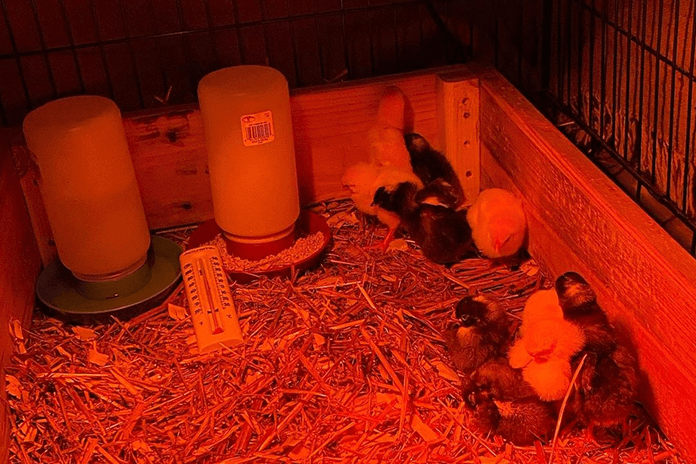
Why Use a Chicken Brooder?
Setting up a brooder for newly hatched chicks is essential during this early life stage. Hatchlings, day-old chicks, and young chicks are very vulnerable and have specific needs to keep them healthy and give them a high chance of survival.
These are the key reasons why a chicken brooder is essential:
- Consistent Warmth: Chicks require constant warmth to thrive and survive. A chick brooder should provide a controlled, warm environment. This will ensure that chicks don’t succumb to cold temperatures.
- Protection: Chicks can not defend themselves and need to be kept in an enclosed environment. Keep them safe from any kind of predators, including house pets like cats.
- Proper Hygiene: Brooders help maintain a clean environment for your chicks, reducing the risk of diseases.
Setting Up a Chicken Brooder
Setting up a brooder doesn’t have to be complicated or expensive. You don’t need to buy an all-in-one chick brooder; you can make one yourself with some old panels or containers. But, some items must be purchased, however. Some companies sell an all-in-one brooder set, like the RentACoop Little Red Barn brooder we tried out ourselves.
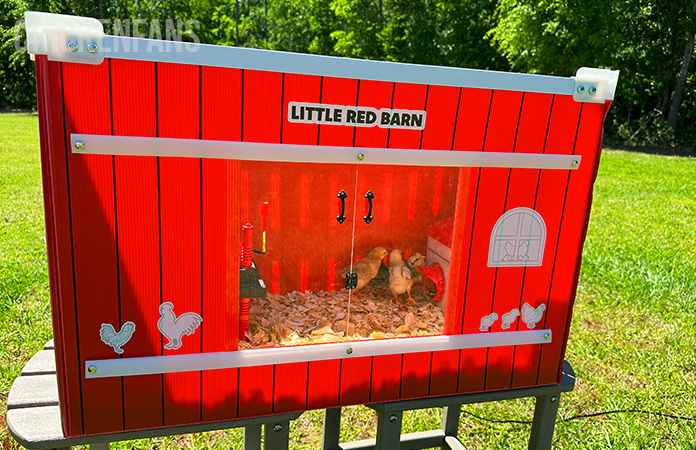
Let’s go over the entire process of setting up a chick brooder.
- Ensure enough space: Make sure you have enough space to place your brooder, but also ensure your chicks will have enough space inside the brooder. Young chicks are okay in a small container, but once they grow and mature, they’ll need more space to run around.
- Choose your preferred type of brooder: It can be made of several materials, including wood, plastic, or even cardboard. The brooder should have walls to prevent drafts and offer security.
- Place the brooder in a warm place: The location of the brooder is crucial as it should be situated in a warm and safe space. Keep it away from any house pets and avoid places with drafts and direct sunlight.
- Add bedding: Start with paper towels or diaper pads for easy maintenance and cleaning. Switch to other bedding materials like fine wood shavings or hemp as the chicks grow. Do not use shredded newspaper as bedding; the slippery surface may cause spraddle legs. Keep the area clean and dry by changing the bedding regularly.
- Place feeder and waterer: Choose feeders and waterers appropriate for the size and age of your chicks. Keep them clean at all times.
- Add a heat source: Young chicks need extra warmth; room temperature is too cold. Place a heat source in the brooder, a red heat lamp, a heat plate, or a heating pad. The downside of using a heat lamp is that it uses a lot of power and can be dangerous. Radiant heat is safer.
Once these items are in place, you are ready for the arrival of the baby chicks! Make sure you prepare the following items right before their arrival.
- Fill the waterer and feeder
- Turn on the heat lamp or heating plate
- Ensure one last time that the location of the brooder is safe
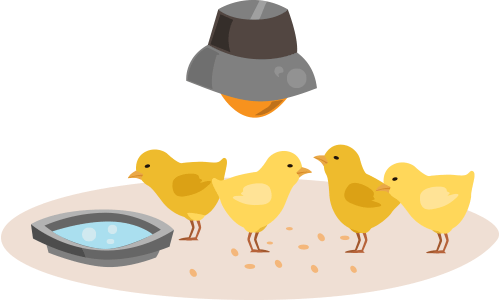
Monitoring Chicks Behavior
After your chicks have arrived in their brooder, closely monitor their behavior during the first few hours and watch them frequently throughout the entire brooding period.
If chicks are too hot, they will move away from the heat source, while cold chicks will huddle together under it. The starting temperature in the brooder should be 90/95 degrees Fahrenheit at first. Then, each week, lower the temperature by 5 degrees until they have grown feathers. That’s about 5 to 8 weeks in.
If you notice your chicks preferring one side of the brooder, they may experience some draft. Ideally, your chicks should exhibit a range of activities, like exploring, drinking, and scratching their feet.
After four weeks, you can add a small roost in the brooder so they can start practicing roosting. Just a roost about 4 inches above the floor will suffice.
After Three Weeks
When they are about two or three weeks old, the chicks can go outside for short periods. Ensure it’s not too windy and the temperature is above 65 degrees.
Always cover the run area so they can’t run away and are protected from predators. A simple rabbit cage works well.
When they are about six weeks old and have their feathers, they can go outside and move to the main chicken coop.
Summary
A chick brooder is an essential tool if you plan to raise chicks. It’s a controlled and safe enclosure that provides warmth, protection, and care, mimicking the mother hen. As your chicks grow up, plan for a smooth transition to outdoor living.




